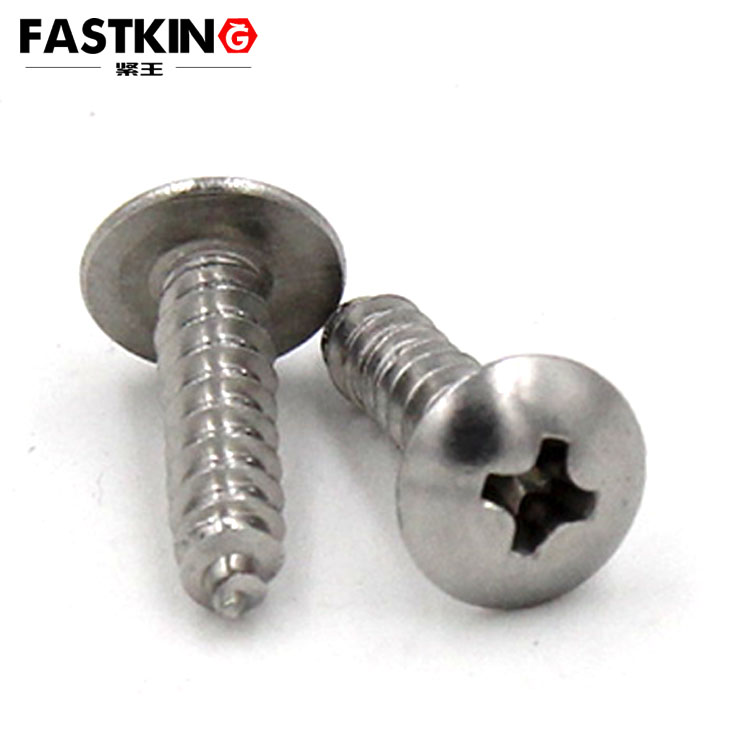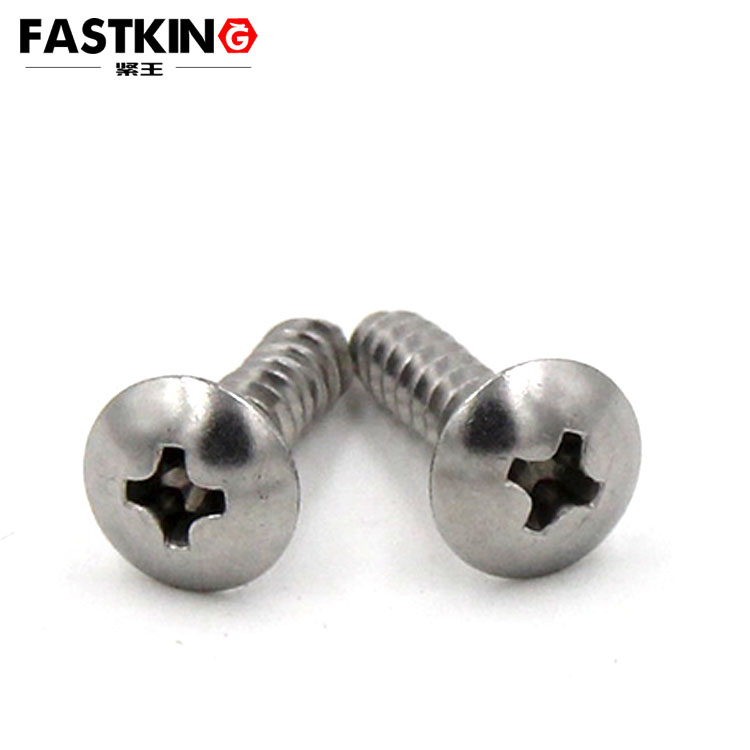Large flat head cross-head self-tapping screws are widely used in modern industrial production, construction, and everyday life as a common type of fastener. Their unique structural design and superior performance characteristics make them the preferred solution for many fastening scenarios.

I. Structural Features of Large Flat Head Cross-Head Self-Tapping Screws
Large flat head cross-head self-tapping screws have distinctive structural features. The head of the screw is designed with a large flat shape, which provides a larger contact area compared to standard screws, resulting in more secure fastening. The cross-head design facilitates the use of standard cross-head screwdrivers, enhancing installation efficiency. The self-tapping thread design allows the screw to create its own threads in the material being fastened, eliminating the need for pre-drilling, thus simplifying the installation process.
These screws are typically manufactured from high-quality steel and undergo surface treatments such as galvanizing or other rust-prevention processes to offer excellent corrosion resistance. The thread design is precisely engineered to ensure both strong fastening and smooth installation.
II. Main Application Scenarios

In the construction and decoration sector, large flat head cross-head self-tapping screws are extensively used for applications such as drywall installation and light steel keel fixation. Their powerful fastening capabilities and convenient installation characteristics significantly improve construction efficiency. In the woodworking and furniture manufacturing industry, these screws are commonly used for panel connections and hardware fixation, ensuring the stability of furniture structures.
In the assembly of electrical equipment, large flat head cross-head self-tapping screws are widely used for fixing electrical enclosures and installing internal components. Their flat head design does not protrude from the surface, ensuring a neat appearance of the equipment.
III. Detailed Usage Methods
When using large flat head cross-head self-tapping screws, it is essential to select the appropriate screw size based on the characteristics of the material being fastened. For harder materials, it is recommended to first drill a pilot hole to reduce installation resistance and prevent screw breakage. During installation, ensure that the screw is perpendicular to the surface of the workpiece and apply even force to screw it in smoothly.
It is advisable to use an electric screwdriver with torque adjustment capabilities to precisely control the fastening force, avoiding material damage or screw stripping due to excessive force. For areas that require frequent disassembly, consider using anti-loosening washers to enhance connection reliability.

The correct selection and use of large flat head cross-head self-tapping screws can not only improve work efficiency but also ensure the stability and safety of the fastened parts. In practical applications, it is important to choose the appropriate screw size and installation method based on the specific environment and requirements to achieve the best fastening results. With advancements in material science and manufacturing processes, the performance of large flat head cross-head self-tapping screws will continue to improve, and their application scope will further expand.
